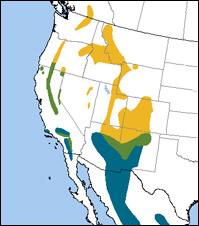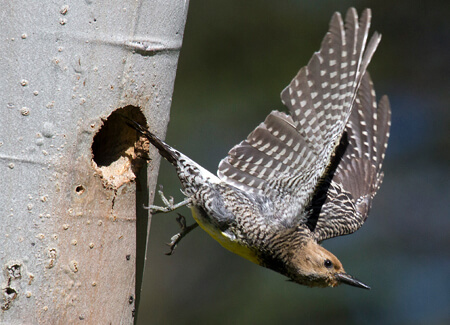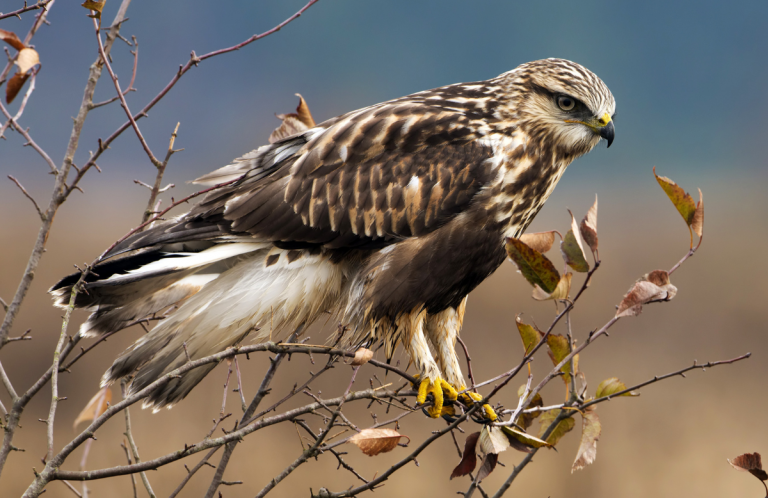 Male and female Williamson's Sapsuckers look so different that when John Cassin, an American ornithologist, first described them in 1852, he classified them as separate species. It's an understandable mistake. The male is black and white with a yellow belly and red throat; the female has a brown head, black and white barred back and flanks, and a black band across a yellow belly. The sexes were not recognized as the same species until more than 20 years later, in 1873.
Male and female Williamson's Sapsuckers look so different that when John Cassin, an American ornithologist, first described them in 1852, he classified them as separate species. It's an understandable mistake. The male is black and white with a yellow belly and red throat; the female has a brown head, black and white barred back and flanks, and a black band across a yellow belly. The sexes were not recognized as the same species until more than 20 years later, in 1873.
This sapsucker is named after Robert Williamson, a topographical engineer who led surveying expeditions throughout the western United States. It shares habitat with other western forest specialists such as Flammulated Owl, Western Tanager, and Pygmy Nuthatch.
Williamson's Sapsucker may be declining in some parts of its range due to habitat loss, particularly the loss of large snags (dead trees) required for nesting, especially on private lands.
Tapping for Sap
Williamson's Sapsuckers are the largest species of sapsucker and are partially migratory. More northerly populations migrate as far as southern Mexico, while others move from higher-elevation forests downslope to forests where more food is available during the winter. They are omnivorous, feeding on sap, insects, and fruits. During the nesting season they eat mostly ants, and feed ants to their young.
Sign up for ABC's eNews to learn how you can help protect birds
The four species of sapsuckers found in North America are unique among woodpeckers in drilling neat rows of tiny holes, called wells, in the trunks of trees. The oozing sap traps small insects; sap and insects provides food for the sapsuckers as well as other birds such as Rufous and Anna's hummingbirds and Townsend's and Orange-crowned warblers.

Williamson's Sapsucker female by Ron Dudley
Williamson's Sapsuckers form monogamous pairs, often with their mate from a previous year. The male excavates a new nesting cavity each year, sometimes reusing the same tree. The nest is a small bed of wood chips and shavings at the bottom of the cavity.
Despite the male's flashy appearance, this is an inconspicuous species. They can sometimes be located by listening for their loud, cat-like mewing calls.
Partnerships to Save Williamson's Sapsucker (and Other Birds)
ABC has cooperated with numerous partners to develop regional conservation alliances to improve habitat conditions and stabilize or increase populations of cavity-nesting birds such as Williamson's Sapsucker in ponderosa pine forests of the Pacific Northwest. The primary focus has been to help private landowners incorporate techniques into their forest management plans, especially thinning and snag management, that will also benefit cavity-nesting birds.
ABC has produced several management guides detailing this work, including Cavity-Nesting Bird Habitat and Populations in Ponderosa Pine Forests of the Pacific Northwest, and Snags, Bark Beetles, and Cavity-Nesting Birds: Conservation and Management in Ponderosa Pine Forests of the Pacific Northwest. These and other special reports are available on ABC's website.
Donate to support ABC's conservation mission!



















































